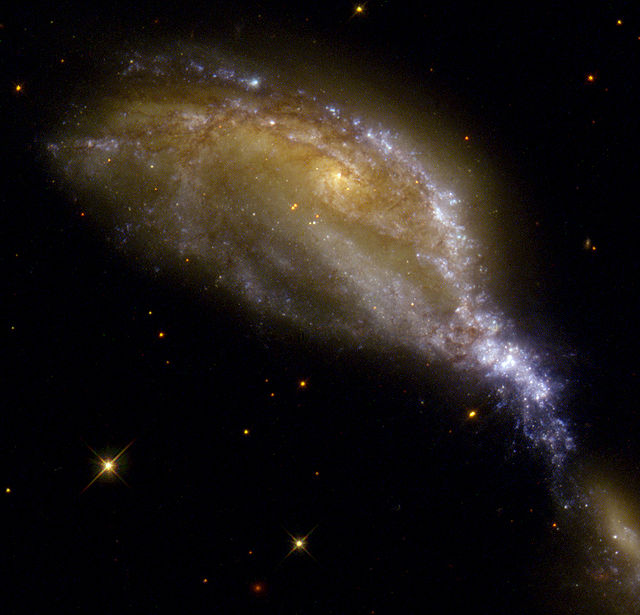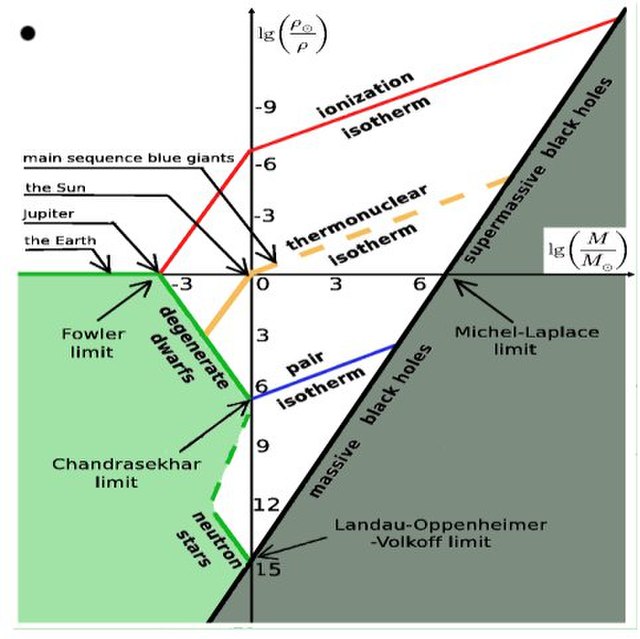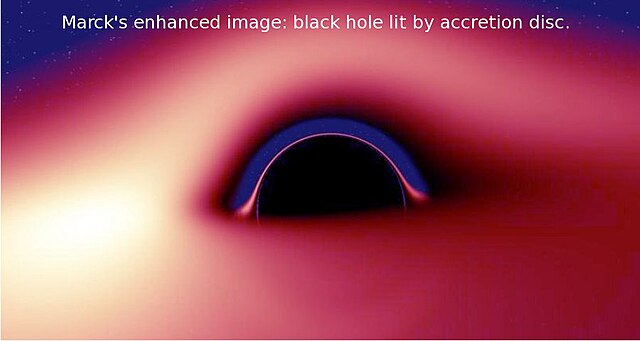A neutron star is a collapsed core of a massive supergiant star. The stars that later collapse into neutron stars have a total mass of between 10 and 25 solar masses (M☉), possibly more if the star was especially rich in elements heavier than hydrogen and helium. Except for black holes, neutron stars are the smallest and densest known class of stellar objects. Neutron stars have a radius on the order of 10 kilometers (6 mi) and a mass of about 1.4 M☉. They result from the supernova explosion of a massive star, combined with gravitational collapse, that compresses the core past white dwarf star density to that of atomic nuclei.
Central neutron star at the heart of the Crab Nebula
Radiation from the rapidly spinning pulsar PSR B1509-58 makes nearby gas emit X-rays (gold) and illuminates the rest of the nebula, here seen in infrared (blue and red).
A computer simulation depicting a neutron star with accretion disk, spewing out X-rays through the magnetic axis
NASA artist's conception of a "starquake", or "stellar quake"
Gravitational collapse is the contraction of an astronomical object due to the influence of its own gravity, which tends to draw matter inward toward the center of gravity. Gravitational collapse is a fundamental mechanism for structure formation in the universe. Over time an initial, relatively smooth distribution of matter, after sufficient accretion, may collapse to form pockets of higher density, such as stars or black holes.
NGC 6745 produces material densities sufficiently extreme to trigger star formation through gravitational collapse
Logarithmic plot of mass against mean density (with solar values as origin) showing possible kinds of stellar equilibrium state. For a configuration in the shaded region, beyond the black hole limit line, no equilibrium is possible, so runaway collapse will be inevitable.
Simulated view from outside black hole with thin accretion disc







